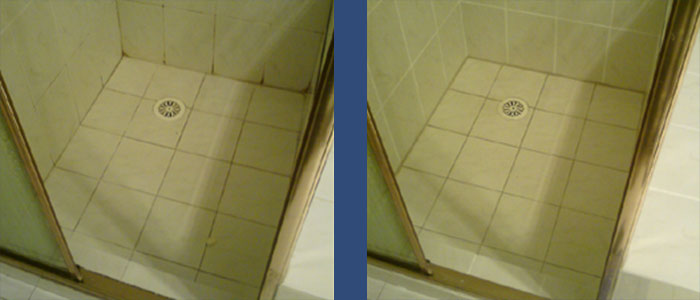We have stumbled on this great article on Preventing Water Damage in the Bathroom directly below on the web and figured it made perfect sense to talk about it with you on my blog.

The shower room is incredibly vulnerable for damp accumulation and also prospective water damages due to the constant use of water in it. This write-up offers basic inspection methods to help discovering water damage risks.
The constant use of water in the bathroom makes it exceptionally prone for moist build-up and possible water damage. By evaluating it frequently, you can reduce water associated damages.
The complying with collection of inspections is simple to do and must be done once in every 3 months in order to keep your shower room healthy as well as to stop potential water problems caused by the bathtub, the shower, pipe joints and also plumbing, sinks, cabinets, and also the toilet
Do not disregard executing these evaluations and also be detailed while performing them. Remember that these simple assessments can conserve you a great deal of cash by providing very early signs for water damage
Tub and also Shower
The shower and tub call for special attention as well as upkeep. Examine the floor tiles and change if fractured. Make sure that there is no missing grout in between the floor tiles. Inspect as well as change fractured caulking at joints where the walls meet the floor or the bath tub. Obstructed drains and pipes troubles will certainly prevent the bathtub from drying and also might show serious issues underneath the bathtub. Talk to a specialist quickly to prevent structural damage. Take note of discolorations or soft areas around the tub walls as they might show an internal leak.
Plumbing
Signs for water damages are tough to detect because a lot of pipelines are installed inside the walls.
Pay special interest to floor covering and also wall surfaces moisture as well as spots as they might show an unseen plumbing trouble. Check moisture levels in adjoining spaces also.
Sinks and also Cabinets
Sinks and also closets are revealed to moisture and humidity daily as well as are typically ignored. Evaluate consistently under the sink and also on the kitchen counter over it. Fix any kind of drip in the catch as it might recommend drainpipe troubles. Look around the sink, slow draining pipelines might show an obstructed drainpipe. Change sink seals if they are fractured or loosened.
The Commode
The commode is an at risk water joint. Examine the water lines and also look for leakages around the bathroom seat, in the hose pipe, as well as under the water storage tank. If you spot any signs of moisture on the floor around the commode, check for leaks in the toilet rim and container seals.
Realize that hanging commode dish deodorants enhances the chances for clogs.
Water Damage Signs In The Bathroom To Avoid Cleanup
Musty smell
This is one of the easiest signs to catch because musty smells are so odorous. The damp, earthy, moldy smell should be a big red flag. The smell will develop when moisture gets trapped in surfaces, and begins to facilitate mold growth. Leaking pipes under cabinets, inside walls, and behind shower fixtures will cause moisture to stay trapped and not dry, which will lead to mold growth and spread. As soon as you notice any musty smells in your bathroom, have it checked for hidden water damage and cleanup signs.
Visible mold
If the smell isn’t there to give it away, sometimes you will actually see mold growth. Finding mold in your bathroom is a serious problem, because mold is very harmful to your health. By the time mold growth is visible, it also means that water damage has already occurred and been present for some time. The only way the mold problem can be resolved is to find the source of the moisture and get it stopped. To safely and adequately remove mold, you need to have professionals handle the remediation. Do not waste any time in getting mold problems addressed, fixed, and sanitized so that you can protect you and your family from the many respiratory symptoms caused by mold exposure.
Damaged floors
Bathroom floors should be able to withstand some exposure to water while still remaining in good condition. However, when excess exposure or water leaks occur, they will begin to damage even the most water-resistant flooring. If you notice any cracking, bubbling, staining, or warping on your bathroom floors, there is probably a water leak somewhere causing the distortion. If you notice areas of the floor have become softer, or even have a spongy feeling, there is probably damage to the subfloor. Subflooring is typically made up of plywood. When plywood is exposed to water or moisture, it will absorb it. Once it has become saturated, the weight of the excess water will cause the wood to swell and soften. Check the floors in your bathroom frequently to catch any of these sings before they lead to damaged subflooring.
Changes on walls
When water leaks behind walls, it will cause changes in the drywall. Peeling plaster, blistering paint, and soggy wallpaper are all good indicators that excess water is building up behind the wall. Water leaking behind drywall will cause it to swell and be soft to the tough. If you start to notice gaps along the trim of your walls, or where tile meets the wall, it could also be a strong indicator that there is a leak behind the wall. Any changes, distortion, or damage on the walls should be evaluated as soon as you notice it to prevent further water damage and cleanup.

I hope you liked our piece on Preventing Water Damage in the Bathroom. Many thanks for spending some time to read our article post. Sharing is nice. Helping others is fun. Thank you for taking the time to read it.
Article